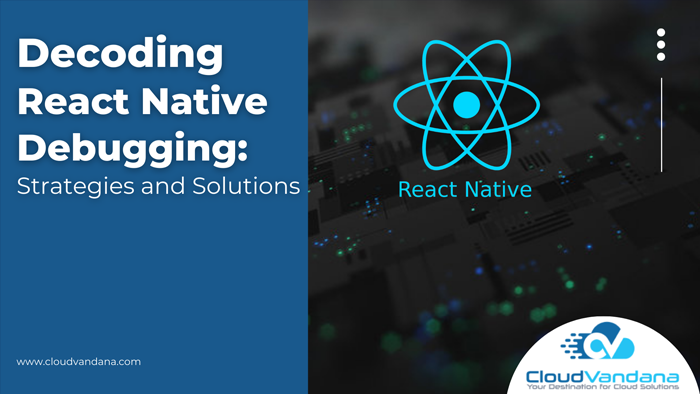With the rapid rise of mobile app development, React Native has emerged as a leading framework for building cross-platform applications. Its ability to develop applications for both iOS and Android using a single codebase has made it immensely popular among developers. However, like any technology, React Native applications are not immune to bugs and errors. Debugging plays a crucial role in the development process to identify and fix issues efficiently. In this comprehensive guide, we will delve into the intricacies of React Native debugging, exploring various tools, techniques, and best practices to streamline the debugging workflow.
Understanding React Native Debugging
Debugging in React Native involves identifying and resolving errors, glitches, and unexpected behaviors within your mobile application. These issues range from simple syntax errors to complex runtime problems affecting the app’s performance and functionality. React Native debugging encompasses a spectrum of methodologies and tools designed to facilitate detecting and resolving these issues, ensuring a smooth and seamless user experience.
Common Types of React Native Bugs
Before delving into debugging techniques, it’s essential to understand the common types of bugs encountered in React Native development:
Syntax Errors: Errors resulting from incorrect syntax or typos in the code.
Runtime Errors: Errors occurring during the execution of the application, such as undefined variables or unexpected behaviors.
UI Rendering Issues: Problems related to the rendering of user interfaces, including layout inconsistencies and component misalignment.
State Management Bugs: Issues stemming from improper state management, leading to unpredictable application behavior.
Performance Bottlenecks: Performance-related issues causing sluggishness or delays in the application’s responsiveness.
Debugging Tools and Techniques
React Native provides developers with many tools and techniques to debug applications effectively. Let’s explore some of the most commonly used methods:
Chrome Developer Tools: Leveraging Chrome Developer Tools, developers can debug React Native applications in debug mode. By enabling remote debugging, developers can inspect and manipulate the application’s JavaScript code, view console logs, and monitor network activity in real time.
React Native Debugger: React Native Debugger is a standalone debugging tool built specifically for React Native development. It integrates seamlessly with React Native projects, offering features such as Redux DevTools, network inspection, and performance monitoring, all within a user-friendly interface.
Logging and Console Output: Utilizing console.log statements strategically throughout your codebase allows you to track the execution flow, log variable values, and identify potential areas of concern. Additionally, React Native provides built-in logging mechanisms, including console.warn and console.error, to highlight critical issues and warnings during runtime.
Remote Debugging: Remote debugging enables developers to debug React Native applications running on physical devices or simulators from their development machine. By connecting the device to the development server via USB or Wi-Fi, developers can access debugging tools and remotely inspect the application’s runtime environment.
React Native Performance Monitoring: Performance monitoring tools like Flipper and Reactotron provide insights into the application’s performance metrics, including CPU usage, memory allocation, and render times. By identifying performance bottlenecks early in the development cycle, developers can optimize their applications for better responsiveness and user experience.
Best Practices for React Native Debugging
To streamline the debugging process and enhance productivity, consider implementing the following best practices:
Embrace Test-Driven Development (TDD): Adopting a test-driven development approach allows you to write test cases for your application’s components and functionalities upfront. By automating the testing process, you can identify bugs early in the development lifecycle and ensure consistent code quality across your project.
Use Debugging Symbols: Generating and including debugging symbols in your React Native builds facilitates more informative error messages and stack traces. Debugging symbols provide valuable insights into the application’s runtime behavior, making pinpointing the root cause of issues during debugging sessions easier.
Leverage Code Linting and Static Analysis: Integrating code linting tools like ESLint and static analysis tools like Flow or TypeScript into your development workflow helps enforce coding standards and identify potential issues before they manifest as runtime errors. Configuring strict linting rules promotes code consistency and reduces the likelihood of introducing bugs into your codebase.
Implement Error Boundary Components: Error boundary components act as safety nets for handling unexpected errors and preventing application crashes. By encapsulating parts with error boundaries, you can gracefully handle errors at the component level and provide fallback UIs or error recovery mechanisms to enhance the overall robustness of your application.
Collaborate and Seek Feedback: Debugging is not a solitary endeavor. Collaborate with team members, leverage online communities, and seek feedback from peers to gain fresh perspectives and insights into challenging debugging scenarios. Sharing knowledge and experiences fosters a collaborative debugging culture and accelerates the resolution of complex issues.
Conclusion
In conclusion, mastering React Native debugging is essential for building high-quality mobile applications that deliver exceptional user experiences. By leveraging debugging tools, techniques, and best practices, developers can streamline the debugging workflow, identify issues efficiently, and maintain code stability throughout the development lifecycle. Embrace the iterative nature of debugging, remain vigilant for potential pitfalls, and continuously refine your debugging skills to become a proficient React Native developer. Remember, effective debugging is not just about fixing bugs; it’s about honing your problem-solving abilities and engineering resilient software solutions in the dynamic world of mobile app development.
CloudVandana is a reputed Staff Augmentation firm based in India. With a team of experienced React Native developers, CloudVandana offers unparalleled expertise and support to businesses seeking to augment their development teams. Our pool of talented professionals can tackle complex projects and deliver exceptional results, ensuring the success of React Native initiatives. Call Now.










